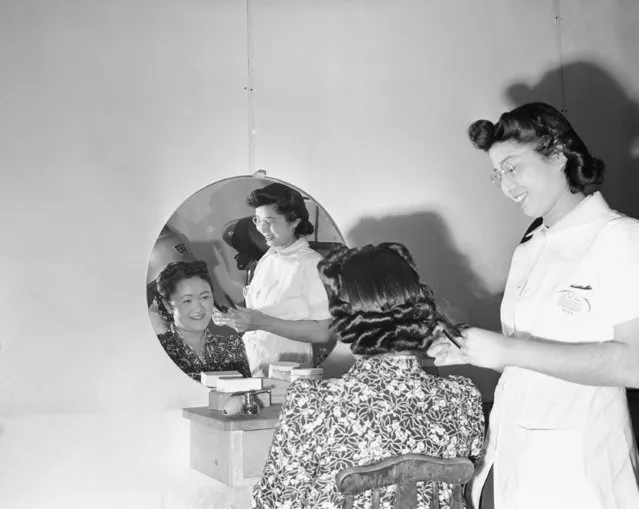
In this May 23, 1943, file photo, Mary Takita of Walnut Grove, Ca, works on the hair of Mrs. Y. Yoshihara of Olympia at the Japanese relocation camp in Tule Lake, Calif., May 23, 1943. As the 75th anniversary of the formal Sept. 2 surrender ceremony that ended WWII approaches, Hidekazu Tamura, a former Japanese-American living in California, has vivid memories of the wartime years he spent in the United States, torn between two nationalities, and the events that led him to renounce his American citizenship and return to Japan. During the pacific war period, Tamura was at Tule Lake, a segregation center for those deemed disloyal, where he joined a group called “Hokoku Seinen Dan,” which means, “Young Men’s Association to Serve the Fatherland”. (Photo by AP Photo/File)
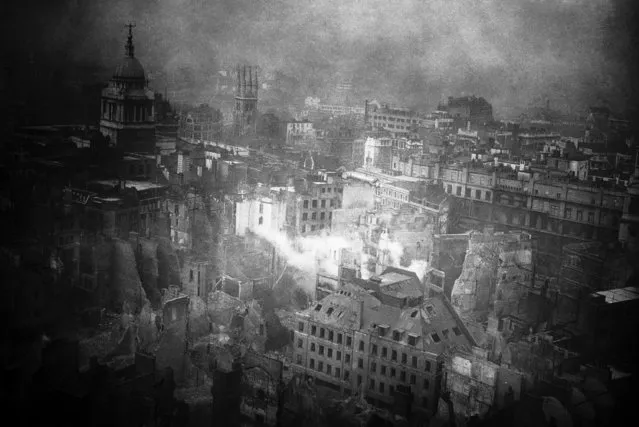
A striking view, taken from the roof of St. Paul's Cathedral in London January 3, 1941, showing how the famous building was ringed by fires on the night of the Great “Blitz”. Devastated buildings are seen everywhere, with the tower of the Old Bailey, surmounted by its Statue of Justice, still standing top left. (Photo by AP Photo)
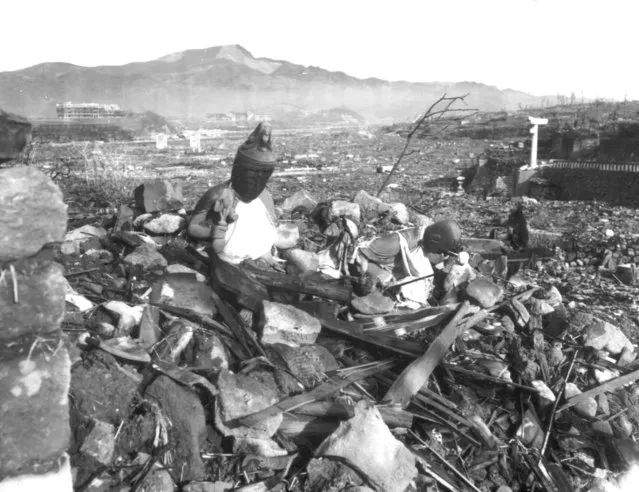
In this September 24, 1945, file photo, released by U.S. Marines, a battered religious figure stands witness on a hill above a burn-razed valley at Nagasaki, Japan, after the second atomic bomb ever used in warfare was dropped by the U.S. over the Japanese industrial center. The city of Nagasaki in southern Japan marks the 75th anniversary of the U.S. atomic bombing of Aug. 9, 1945. (Photo by U.S Marines via AP Photo/File)
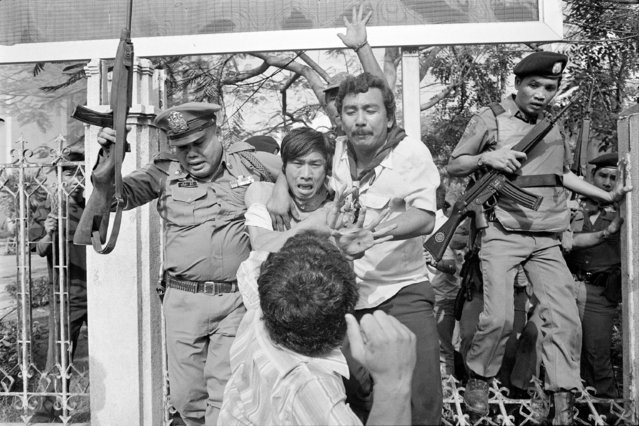
In this October 6, 1976, file photo, a right-wing student, center foreground, draws his arm back to strike a captured and wounded leftist student being taken by police to an ambulance in during a student massacre in Bangkok, Thailand. This year’s anti-government protests are seeking new elections, a more democratic constitution and an end to intimidation of political activists. Their speeches have repeatedly highlighted the 1976 tragedy, piquing the interest of the current generation in what their forebears faced. (Photo by Neal Ulevich/AP Photo/File)
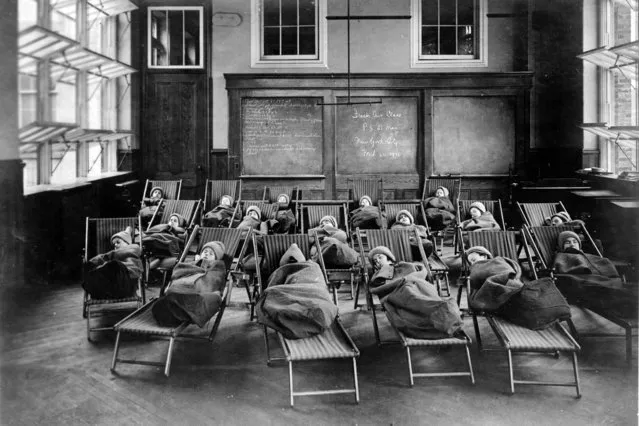
This 1911 photo from the Library of Congress shows children wrapped in blankets, at a fresh air class rest hour at Public School No. 51, in New York. Poor ventilation in school buildings across the U.S. will limit the ability of in-person instruction to resume safely. Some districts are warming to the idea of outdoor classrooms. (Photo by Library of Congress via AP Photo)
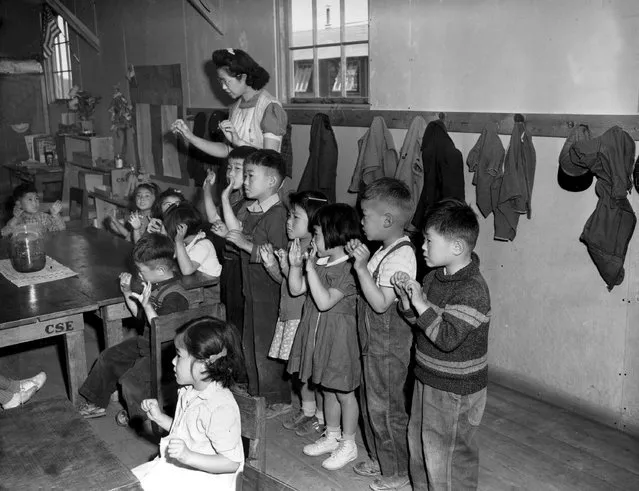
In this May, 1943 file photo, Aiko Sumoge, an assistant teacher, leads a Kindergarten class to sing an English folk song at the internment relocation center for Japanese Americans in Tule Lake, Ca., in during World War II. Roughly 120,000 Japanese immigrants and Japanese-Americans were sent to desolate camps that dotted the West because the government claimed they might plot against the U.S. Thousands were elderly, disabled, children or infants too young to know the meaning of treason. Two-thirds were citizens. (Photo by AP Photo/File)

War orphans eat together at an orphanage in Tokyo in 1946. In Japan, war orphans were punished for surviving. They were bullied. They were called trash, sometimes rounded up by police and put in cages. Some were sent to institutions or sold for labor. They were targets of abuse and discrimination. A 1948 government survey found there were more than 123,500 war orphans nationwide. But orphanages were built for only for 12,000, leaving many homeless. (Photo by Kyodo News via AP Photo)
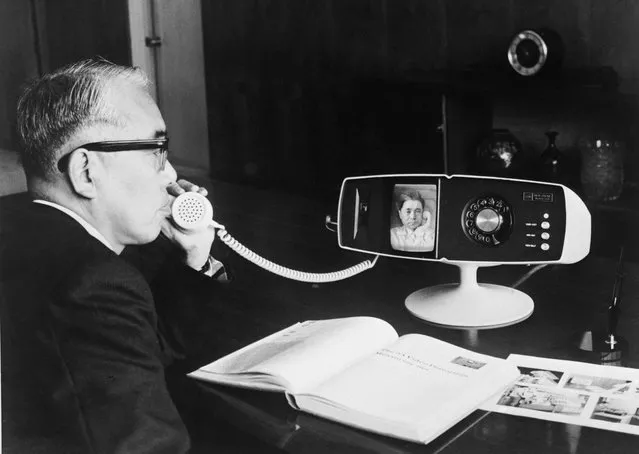
The Toshiba company's new videophone, the Model 500 View Phone, being tested at the company's Tokyo headquarters, 6th May 1968. (Photo by Keystone/Hulton Archive/Getty Images)
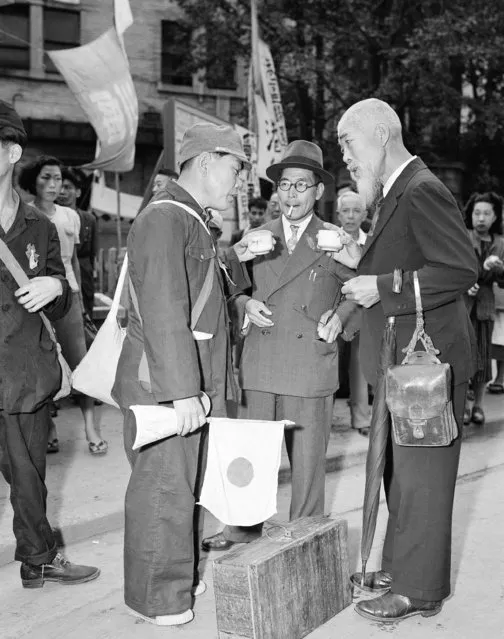
In this October 7, 1949, file photo, relatives meet one of the Japanese repatriates from Manchuria and have cups of hot tea supplied by the Japanese Red Cross at the Tokyo station in Tokyo. The bombs stopped falling 75 years ago, but it is entirely possible – crucial even, some argue – to view the region’s world-beating economies, its massive cultural and political reach and its bitter trade, territory and history disputes all through a single prism: Japan’s aggression in the Pacific during World War II. (Photo by AP Photo/File)
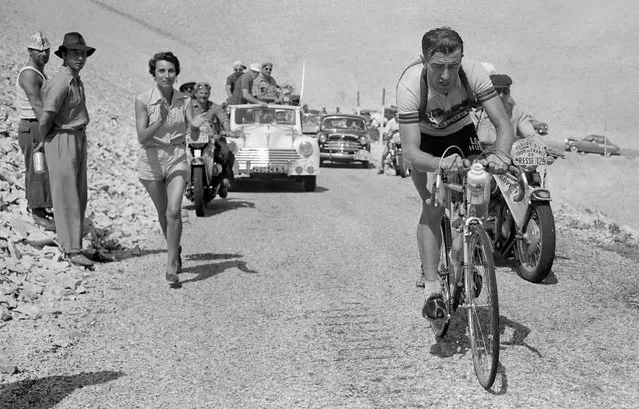
Frenchman Louison Bobet, cheered on by his wife, Christiane, climbs the Mont Ventoux on his way to winning the 11th stage of the Tour de France between Marseille and Avignon, 18 July 1955. Bobet went on to win his third consecutive Tour de France. (Photo by STF/AFP Photo)
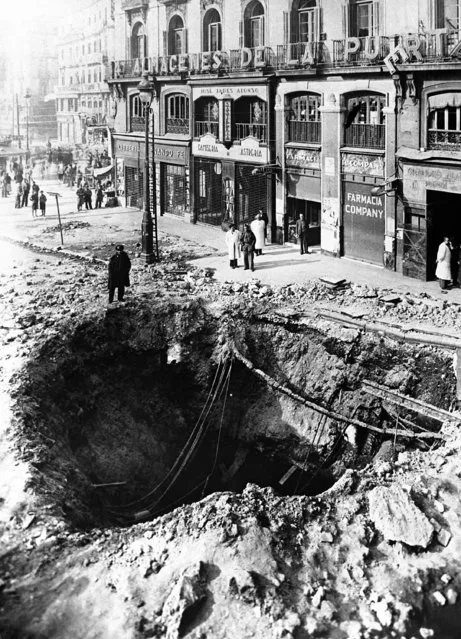
Although the defending forces of Madrid would seem to be gaining the upper hand, the capital is still being bombed and shelled almost every day, and the destruction of buildings and streets continues. A huge crater formed in a Madrid street by an aerial bomb dropped during a Nationalist air raid, on March 23, 1937. (Photo by AP Photo)
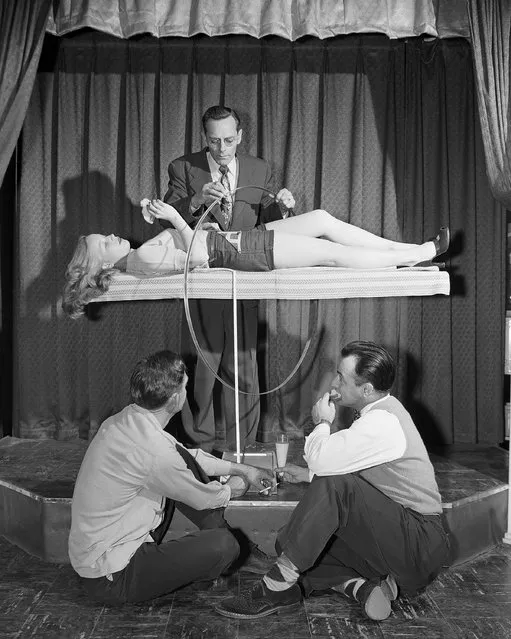
Merve Taylor, president of the magic factory which bears his name, performs the levitation trick called “The Floating Lady” on March 28, 1952 in North Hollywood, Calif. He is trying it out before two of his staff, in foreground, as they work out an improved version of the stunt, which is a favorite among illusionists and has many variations. He passes a hoop over and around Ginger “Trixie” St. Pierre. That's a measuring tape in center, which they're using to measure the height of the lady who eventually disappears up beyond the ceiling curtain. Ginger blithely munches away on a sandwich in the process of “leaving this world”. (Photo by Don Brinn/AP Photo)
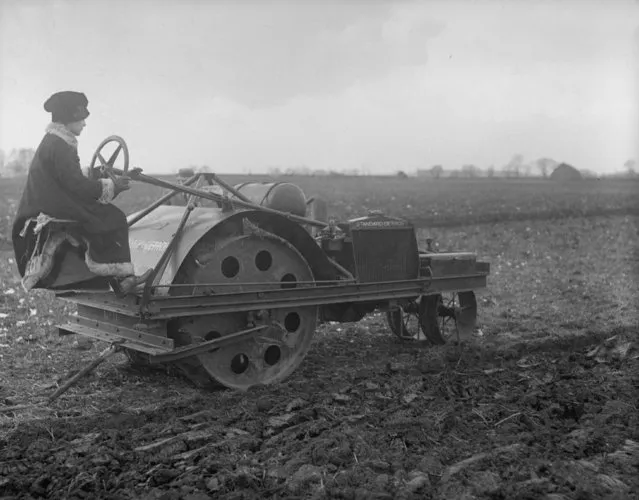
A woman driving a steam plough at Cambridge University Farm in WWI, 8th March 1917. (Photo by Topical Press Agency/Getty Images)
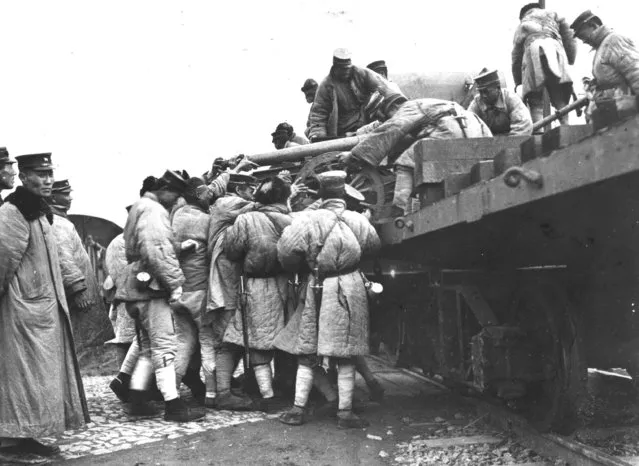
Members of the North Chinese Shangtung forces load a gun on to an armoured train during the desertion of Shanghai in favour of Cantonese forces, 12th April 1927. (Photo by Topical Press Agency/Getty Images)
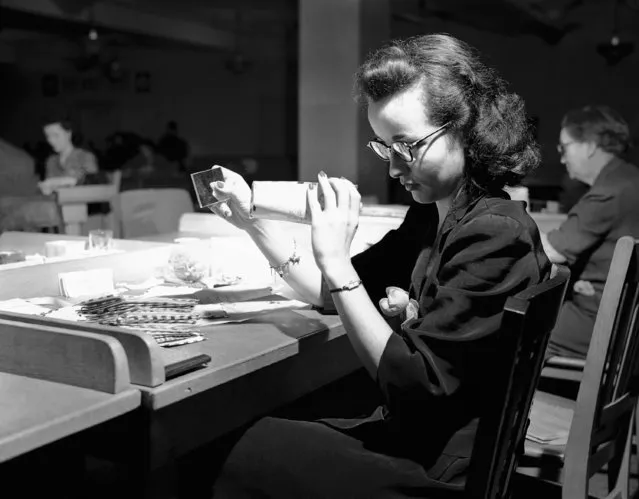
The “mirror test” is used by this worker in the New York bureau of the Office of Censorship to detect any crafty use of the mail to impart information to the enemy, May 14, 1942. All foreign postal matter arriving at or leaving east ports of the United States is inspected in this office. (Photo by John Rooney/AP Photo)
30 Oct 2020 00:03:00,
post received
0 comments
